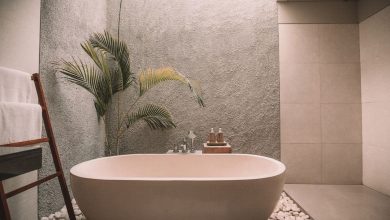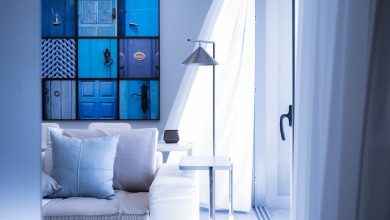How to Choose the Right Color Palette for My Home Interiors?

When it comes to designing your home interiors, one of the most important decisions you will make is choosing the right color palette. The colors you choose can greatly impact the overall look and feel of your space, so it is crucial to choose wisely. Here are some tips to help you select the perfect color palette for your home.
Understanding the Basics of Color
Before diving into the world of color palettes, it is essential to have a basic understanding of how colors work together. Colors can be categorized into warm and cool tones. Warm colors, such as reds, yellows, and oranges, create a sense of energy and excitement. Cool colors, on the other hand, like blues, greens, and purples, create a calming and soothing atmosphere. It is important to strike a balance between warm and cool tones to create a harmonious space.
Consider the Natural Light
One of the key factors that can influence your color palette choice is the natural light in your home. If you have a lot of natural light, you have more freedom to experiment with darker colors. On the other hand, if you have limited natural light, it is best to opt for lighter shades to create an illusion of brightness. Consider the direction your windows face and how the light changes throughout the day to determine the best colors for your space.
Create a Mood
Every room in your home serves a different purpose, and the color palette should reflect that. Think about the mood you want to create in each room. For example, in the bedroom, you may want to create a peaceful and relaxing atmosphere, so opt for soft, cool tones. In the living room, you may want to create a cozy and inviting space, so warm, earthy tones would work well. Keep the purpose and function of each room in mind when selecting your color palette.
Start with a Neutral Base
If you are unsure where to begin, it is always a safe bet to start with a neutral base. Neutral colors, such as whites, beiges, and grays, provide a timeless and versatile backdrop for any design style. They also allow you to easily incorporate pops of color through accessories and furnishings. Starting with a neutral base gives you the flexibility to change up your color scheme in the future without having to make major changes to your space.
Consider the Color Wheel
The color wheel is a useful tool when it comes to selecting a color palette. It shows the relationship between different colors and helps you understand how they work together. One popular technique is the use of complementary colors, which are located opposite each other on the color wheel. Combining complementary colors creates a vibrant and visually appealing contrast. Another technique is the use of analogous colors, which are located next to each other on the color wheel. This creates a more harmonious and cohesive look.
Test, Test, Test
Before committing to a color palette, it is essential to test the colors in your space. Paint small swatches of your chosen colors on the walls and observe how they look in different lighting conditions. Colors can vary greatly depending on the lighting in your space, so it is crucial to see how they interact with your existing furnishings and finishes. Don’t be afraid to experiment and make adjustments until you find the perfect color combination.
Incorporate Personal Preference
While there are many factors to consider when choosing a color palette, it is also important to incorporate your personal preference. After all, you are the one who will be living in the space. Consider the colors that make you feel happy, calm, or energized. Your home should be a reflection of your personality and style, so don’t be afraid to choose colors that speak to you.
In conclusion, choosing the right color palette for your home interiors can be a daunting task, but with a little planning and consideration, you can create a space that is both visually appealing and personalized to your taste. Understanding the basics of color, considering the natural light, creating a mood, starting with a neutral base, using the color wheel, testing the colors, and incorporating personal preference are all key steps in finding the perfect color palette for your home. So go ahead and unleash your creativity, and transform your space with the power of color.




